
The first question to ask is: How do you go about selecting a new President when there are 19 candidates & 3 of those from the same political party? Not as difficult as it might seem…
Only 5 candidates had any real chance of being elected due to their more powerful political machine. However, the remaining 14 played an important role in getting people to vote. All Argentines must —by law— participate in each election. Their main identity document is like a small passport with various sections, one of them to record when they voted in the last election. A dated stamp is placed to show your presence at the polls. Easy. But what happens if you don’t vote? Any time you need to present your document as proof of identity for any government procedure (social security, legal procedures, etc), they check for the stamp. If you don’t have it, they can refuse your request for service until you pay a fine & get your stamp. As a result, over 80% of the population voted in this past presidential election. I think the US could learn a valuable lesson from this.
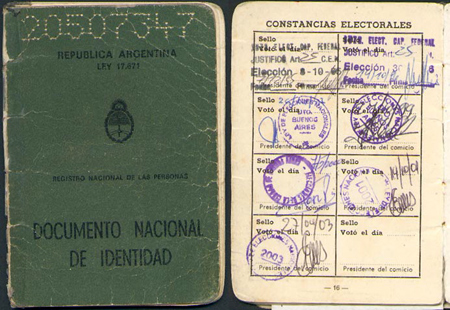
What occurred as recently as the 2001 legislative elections was a form of protest voting called votar en blanco, or blank voting. People went to the polls because of legal obligation, but they would turn in an envelope with no ballot. Sure, this is throwing away your vote, but it’s understandable as a way of saying there is no difference among the candidates or as showing lack of faith in the system. 2001 elections had 20% of votes submitted this way while the recent presidential elections were only 1% en blanco. So having 19 candidates makes sense if it gives everyone a voice.
The electoral process was similar to that of the US with bombardment of propaganda, public appearances & whirlwind tours of the country. The main battle was between Menem & Kirchner… even though it was difficult to believe anyone would want Menem in charge again after what he did to Argentina. On Sunday, 27 April 2003 it was time to decide…
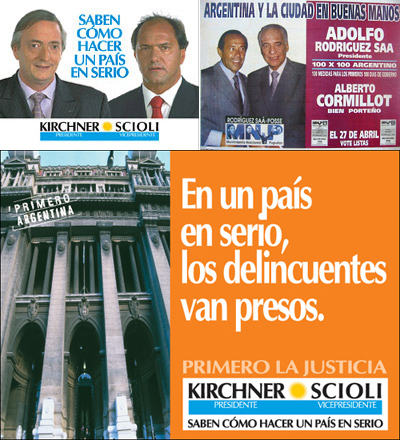
The voting process was amazing for me to witness. Zero alcohol is sold 24 hours before or on the day of voting. What century are we in? Schools open that day for voting to take place. At the entrance, printouts are posted with your name, identity number & street address. By finding your name, you know which table to vote at. So far, so good. But then I noticed that all the men voted on one floor & all the women on another. Again, what century are we in?
Later, some friends explained that old identity numbers began with an “M” for men & “F” for women & that the division in voting was to avoid duplicate number confusion. Identity numbers are no longer issued that way, but separation of the sexes continues. Bizarre. So as you reach the appropriate table, you hand your document over & they find you on the roster. Monitors at each table ensure no illegal or double voting occurs. Then they give you an envelope & you enter a cuarto oscuro, or dark room (actually a classroom with all the windows covered with paper). Inside, you are alone & can select your candidate. All 19 candidates had a separate sheet of paper, or ballot. You take one, place it in the envelope, seal it & return to the table. As you place your ballot in the taped cardboard box, your document is stamped & you’re good until the next election.
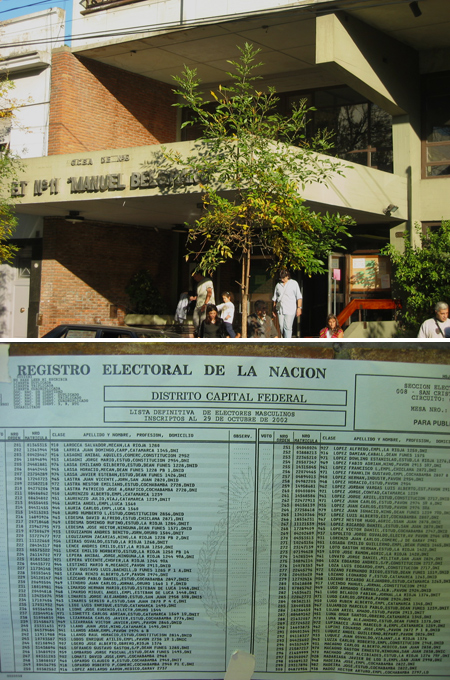
Now for the results: Menem received 24% of the vote, winning central and northern Argentine provinces. Kirchner, with 22%, won southern Argentina plus the all-important province of Buenos Aires. Former Economic Minister López Murphy carried the city of Buenos Aires with 16%. Carrió & Saá both received 14% each, but Carrió failed to win a province while Saá was popular in his bunker around San Luis. With no candidate receiving 45% of the votes or a 10% advantage, a run-off was scheduled for May 18th between Menem & Kirchner as I prepared to leave for Europe. Cut off from easy internet access & busy with work, I learned Menem had pulled out of the race. He may have received the largest percentage of votes among 19 candidates, but many would have cast their vote for Kirchner in a one-on-one confrontation… just so Menem would not win! So by default, Néstor Kirchner became President of Argentina with 22% of the popular vote.
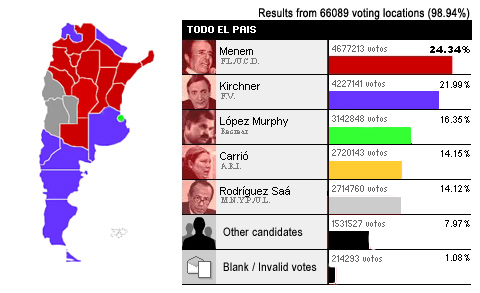
Next came inauguration on the 25th of May. After receiving the mandate to rule from Congress along with the traditional symbols of the sash & bastón, Kirchner set off by motorcade for the Casa Rosada. This is the only day when traffic direction is switched on Avenida de Mayo so the President, accompanied by the horse guard, can go directly from Congress to the Casa Rosada. Many notables were here for the inauguration: Prince Felipe of Spain, President Chavez of Venezuela, & making his debut in Argentina none other than Fidel Castro. It’s anyone’s guess as to what happens now. Colin Powell will be here next week though… so stay tuned.
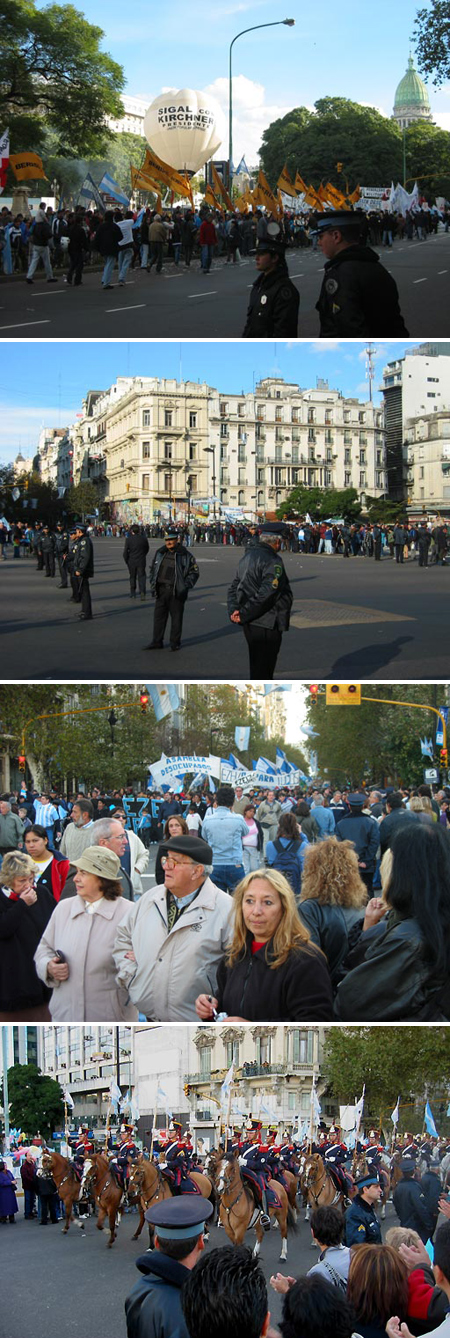
[Originally posted in Argentina Experienced, a website I created to document living in Buenos Aires after the 2001 economic crisis. Text has been edited for style. Definitions of econ terms can be found in the glossary. Politician biographies may help, as well as a summary of recent history & current events.]